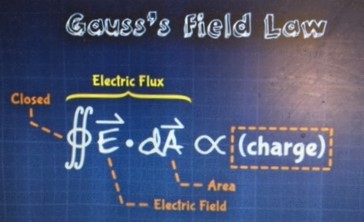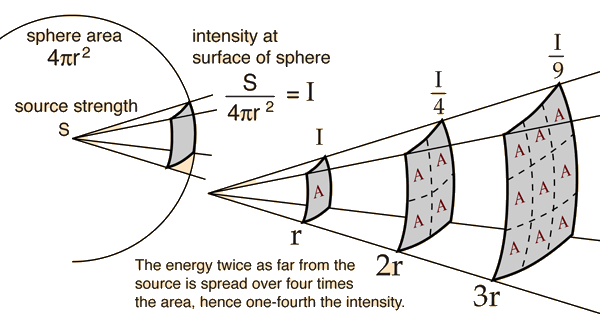Turn off electrical charges and everything crumbles to invisible fine dust. Without electrical forces, there would no longer be things in the universe. – Carl Sagan
Before we look into Maxwell’s equation it would be a good idea to follow the path to his equations. We should try to understand the root, so let us spent time on Gauss’s law in depth conceptually and mathematically. Understanding of the concept will be helpful for fields, wave theory, and duality of the matter.
A good understanding of the Maxwell equation is needed for modern physics. Maxwell’s equation had evolved from works by many great classical physicists. From ancient time, human being was curious about thunder and magnet. Foundation and knowledge were firmed by classical physicists, scientists like André-Marie Ampère, Michael Faraday, Gauss, Lenz, and many others. Their contributions to mathematics for electromagnetism were the roots of Maxwell equations and electrodynamics; finally, it acted as a thread to quantum physics.
André-Marie Ampère (20 January 1775 – 10 June 1836) Ampere law and Maxwell gave us an idea of the symmetry between electricity and magnetism. Mathematically it intertwined electricity and magnetism.
Johann Carl Friedrich Gauss (30 April 1777 – 23 February 1855) and his law for magnetism is one of the four Maxwell’s equations that underline classical electrodynamics.
In 1788 Benjamin Franklin coined charge as + and – of electric phenomena. We are familiar with a balloon stuck to hair due +- charge; proton (+) and electron (-).
The value of electron charge is 1.6 times 10-19 Coulomb. Force of attraction or repulsion is calculated as defined by Coulomb law and uses a constant term 8.99 times 109, this constant is almost a billion trillion times larger than gravitational constant 6.67 times 10-11.
Coulomb law defines how electric force acting on charges. It obeys inverse square law. It is similar to gravity force. Electric force is much stronger than gravitational force.
One of the fundamental forces is EM force. Mass is the property of an object. Field is defined as a property of space. Gravitational field, as well as electromagnetic field (EM), had been evolved as properties of space since the big bang.
Gauss field law explains how charge (mass) and space are connected.
Mass says how much it affects the gravitational field. Similarly, charge says how much it affects the electromagnetic field. A stationary charge in space only affects electric field. A moving charge affects both EM fields. Vector is a simple way to represent a force and direction upon the object.
Gauss’s law says flow of electric fields through a given closed surface to the charges enclosed by this surface. Electrical field is defined as electric force per unit charge.
There are a few terms and constants in physics and science.
Electric permittivity – ϵ0 (epsilon) – 8.85×10-12
Magnetic permeability – μ0 (Mu) – 4π x 10-7
Speed of the light – c = 3 x 108
Net electric field measured as flux = Charges enclosed / ϵ0 (epsilon)
Stationary charges act via electrical field. Moving charges affect EM field.
Those constants are remarkably connected with the speed of light which is a part of electromagnetic waves.
c = 1 over square root of ϵ0 times μ0
c is the speed of light.
Michael Faraday (22 September 1791 – 25 August 1867) contributed to the study of electromagnetism and the basis of Maxwell’s equations. Electromagnetic or magnetic induction generates an electromotive force (i.e., voltage) across an electrical conductor causing a magnetic field. James Clerk Maxwell mathematically described it as Faraday’s law of induction. Lenz’s law describes the direction of the induced field. Maxwell–Faraday equation is one of the four Maxwell equations in his theory of electromagnetism.
In1865, Maxwell (13 June 1831 – 5 November 1879) demonstrated that electric and magnetic fields travel through space as waves moving at the speed of light. Maxwell’s equations for electromagnetism have been called the “second great unification in physics” after the first one by Isaac Newton.

Gauss’s Law

Gravitational flux

Laws of gravity and electricity
Humanity sees the universe as a round shape from nature. Scientists for their mathematical analysis used space as a sphere. Geometry plays a big role in mathematics. A point charge, or a matter and associated energy can be perceived is at the center of the sphere.

inverse square law
From basic math knowledge, we can see how inverse law is applicable to all sorts of energy.
A point is infinitesimal with almost zero radius objects. Conceptually energy flows from a point as a wave in a circular fashion. Naturally, the mathematical calculation uses radius as the starting point.
The progression of modern science started with more in-depth knowledge of electricity and magnetism.
A closed spherical surface is used in calculation by Gauss. It is one of Maxwell’s four equations, which form the base of classical electrodynamics. Flow of electric field as measured in flux q1/ϵ can be expressed as one of Maxwell’s four equations, which form the basis of classical electrodynamics.
Gauss calculated the numbers of magnetic lines pass through a surface in a magnetic field (B). Magnetic flux is always zero for a closed surface and measured in Weber.
A charge can be perceived as wave amplitude at a given distance (r).
Large objects, like people, bikes or cars are made of atoms. Yet the laws of motion and forces are based on mass, not on charge. Why? Quantum physics started to look into this.
Disclaimer – All pictures are taken from Google or other internet sites.
















Comments »
No comments yet.
RSS feed for comments on this post. TrackBack URL
Leave a comment